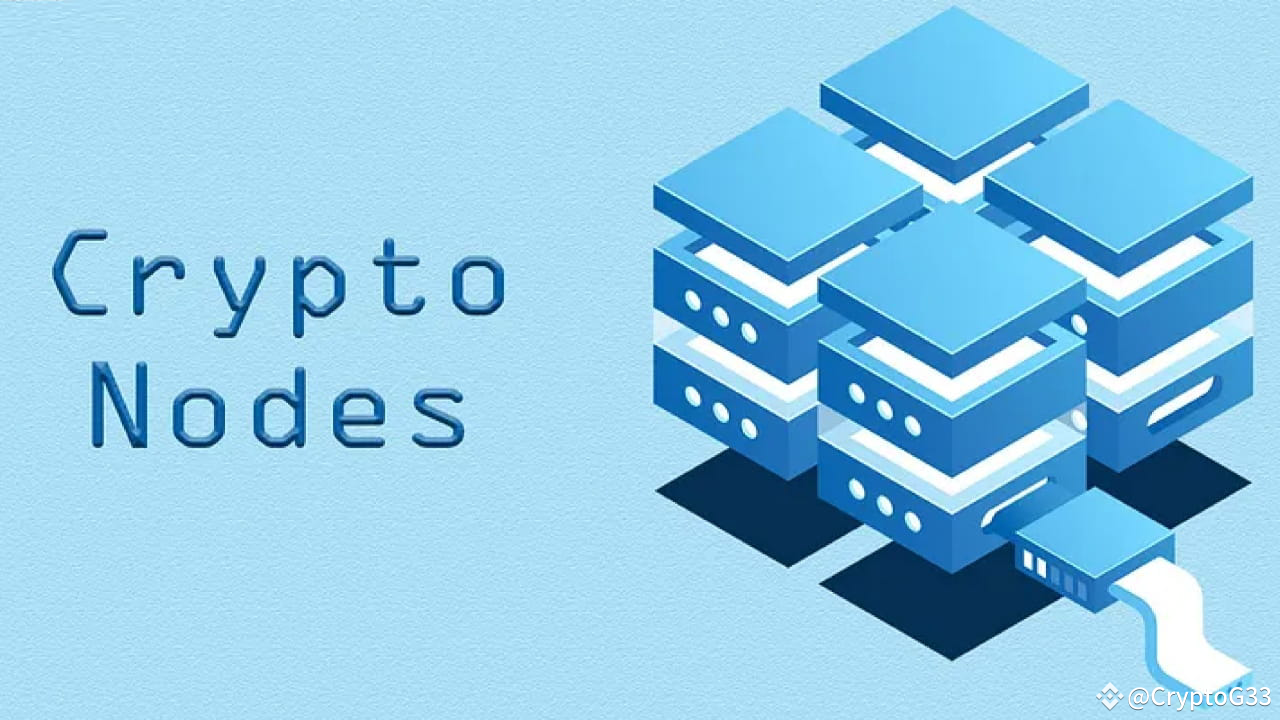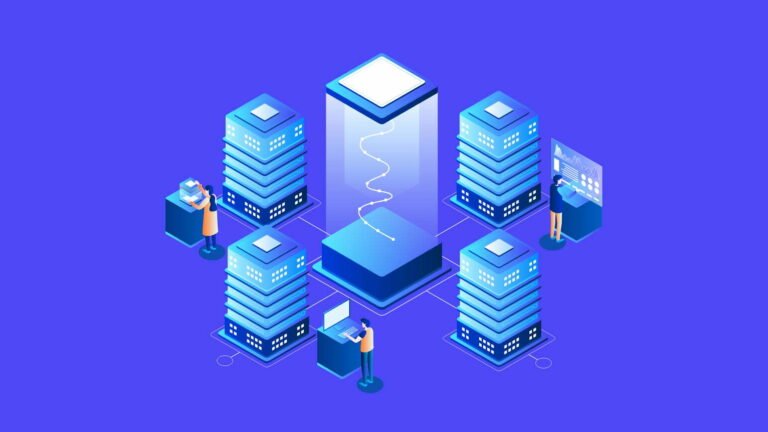In the ever-evolving world of cryptocurrencies, privacy and security are paramount concerns for both casual users and professional traders. As crypto transactions become more mainstream, the need for more secure and private methods of operating a node is growing. One such method is Running Crypto Node Offline. For those who want to take control of their cryptocurrency interactions, running a node offline offers a significant advantage.
It helps protect your personal data, reduces exposure to potential cyber threats, and ensures you can fully verify transactions independently without relying on third-party services. This article explores the benefits, challenges, and best practices for running a crypto node offline. By the end of this guide, you’ll be equipped with everything you need to set up your offline crypto node and understand why this is an essential step for anyone serious about privacy and security in the crypto world.
What Is a Crypto Node
Before diving into running a crypto node offline, it’s important to understand what a crypto node is. In simple terms, a crypto node is a computer that participates in the blockchain network. Nodes are responsible for validating transactions, maintaining a copy of the blockchain, and sometimes broadcasting transactions to other nodes. They play a critical role in ensuring the decentralized nature of blockchain networks.
There are several types of nodes, but for this guide, we’ll focus on full nodes. Full nodes store the entire blockchain’s transaction history, validating and enforcing the network’s rules. These nodes are essential for verifying transactions independently, giving users more control over their activities on the blockchain.
Why Run a Crypto Node Offline
Running a crypto node offline might seem unnecessary at first, but it can offer substantial benefits. By keeping your node offline, you can significantly enhance your privacy and security. Here are some key reasons why running a node offline is a smart choice:
-
Enhanced Privacy
When running a node online, your IP address is exposed, which could potentially link you to your crypto transactions. This can compromise your privacy. By operating offline, you prevent this exposure and ensure your transactions remain anonymous. -
Protection from Hackers
An online node is vulnerable to cyberattacks, including hacking attempts and malware. By keeping your node offline, you minimize the risk of these attacks. -
Reduced Risk of Data Leakage
Running a node offline means you are not constantly transmitting data over the internet, reducing the chances of data leakage or accidental sharing of sensitive information. -
More Control over Your Data
By running your own offline node, you have full control over the blockchain data that you interact with, making it easier to validate transactions independently without relying on third parties.
Steps to Run a Crypto Node Offline

Now that you understand the benefits, let’s dive into how you can set up your own Running Crypto Node Offline. While this process may seem intimidating, it can be broken down into manageable steps. Here’s a comprehensive guide to help you through the process:
Choose Your Node Software
The first step in setting up a crypto node offline is selecting the right software. The most popular options are Bitcoin Core, Ethereum Geth, and other blockchain-specific node software. These programs allow your computer to download the full blockchain and participate in network activities.
For example, Bitcoin Core is the most commonly used software for Bitcoin, while Ethereum Geth is the standard for Ethereum nodes. Choose the software that aligns with the Running Crypto Node Offline to work with.
Set Up the Offline Hardware
To run a node offline, you’ll need a dedicated machine or hardware wallet. It’s advisable to use a cold storage device such as a hardware wallet (e.g., Ledger or Trezor), which ensures that your private keys never leave the offline environment. Make sure the hardware you choose has sufficient storage to handle the full blockchain of the cryptocurrency you’re operating with.
You will need to ensure your device is isolated from the internet, either through physical disconnection or via a secure local network. This isolation is key to ensuring your crypto node remains offline while maintaining full functionality.
Download the Blockchain
The next step is downloading the blockchain to your offline hardware. Since you won’t be directly connected to the internet, you’ll need to download the blockchain on an online device first. Once downloaded, transfer the data to your offline device using a secure method, such as a USB drive. This process can take a considerable amount of time, depending on the size of the blockchain.
Synchronize the Blockchain
Once the blockchain is transferred to your offline hardware, you’ll need to synchronize it. This step ensures that your node has the latest transaction data and is fully up-to-date. Keep in mind that this may require multiple manual steps when you connect the offline node to an online device for updates.
Set Up Transaction Signing
One of the key functions of a Running Crypto Node Offline is transaction signing. By operating offline, you can sign transactions without exposing your private keys to the internet. This can be done by generating a transaction on your offline device and then transferring it to an online device to broadcast it to the blockchain network.
This step involves securely transferring transaction data between your offline and online devices, ensuring that your private keys remain secure at all times.
Test Your Node
Once everything is set up, it’s crucial to test your Running Crypto Node Offline to ensure that it functions properly. Perform a few test transactions to verify that your node can correctly validate, sign, and broadcast transactions.
Regular Maintenance and Updates
Since your node is offline, regular updates and maintenance are essential. Periodically, you’ll need to connect it to an online device to update the blockchain and apply any necessary software upgrades. However, it’s important to ensure that your private keys remain offline and secure during this process.
Also Read:Blockchain Without Internet Unleash Offline Blockchain Potential
Challenges of Running a Crypto Node Offline

While running a Running Crypto Node Offline offers several advantages, there are some challenges you should be aware of:
-
Manual Updates
Keeping your node updated is more challenging when it’s offline. You’ll need to manually transfer blockchain data and updates from an online device, which can be time-consuming. -
Limited Accessibility
Since the node is offline, you won’t be able to access it remotely. If you need to verify or sign transactions, you’ll need to physically interact with the offline device. -
Complex Setup
Setting up an offline node requires a solid understanding of blockchain technology and hardware configuration. It’s not as straightforward as running a node on an online device, and you may need to invest in additional hardware.
Best Practices for Running a Crypto Node Offline
To get the most out of your Running Crypto Node Offline, follow these best practices:
-
Use Secure Hardware
Invest in high-quality hardware wallets or dedicated offline devices to store your private keys. This will help ensure that your data remains safe from hackers and other cyber threats. -
Backup Your Data
Always keep backups of your node’s data, including the blockchain and any transaction history. This will protect you from data loss in case of hardware failure. -
Limit Physical Access
Make sure your offline node is stored in a secure location with limited physical access. This will reduce the risk of theft or tampering. -
Keep Your Node Isolated
Ensure that your offline node is isolated from any online networks, even if temporarily. This will help reduce the risk of exposure to malware or other security threats.
Conclusion
Running a Running Crypto Node Offline is an advanced but highly effective way to maintain privacy and security in your cryptocurrency transactions. While the setup may require technical expertise and some effort, the benefits it offers—especially in terms of security, privacy, and control over your data—are well worth it.
With the right tools, hardware, and precautions, you can ensure that your crypto activities remain secure from prying eyes and malicious actors. If you’re serious about protecting your cryptocurrency investments and maintaining your privacy, setting up an offline node is a crucial step forward in your crypto journey.
FAQs
Can I run a Bitcoin node offline?
Yes, you can run a Bitcoin node offline. The process is similar to running any other blockchain node offline, requiring secure hardware, offline storage, and manual updates.
How often do I need to update my offline crypto node?
You should update your offline node regularly, ideally every time there is a significant update to the blockchain or node software. This ensures that your node remains synchronized with the network.
Is running a crypto node offline completely safe?
While running a node offline significantly reduces the risk of online attacks, there are still potential risks such as physical theft or tampering. Proper precautions, like secure storage and backups, are essential.
Can I use an offline crypto node for staking?
Yes, you can use an offline node for staking, but the process may require you to transfer staking data between your offline node and an online device. Be sure to keep your private keys secure.
What are the main risks of running a crypto node offline?
The primary risks include manual updates, limited accessibility, and the complexity of setting up the node. However, these risks are mitigated by ensuring proper security and backup procedures.

